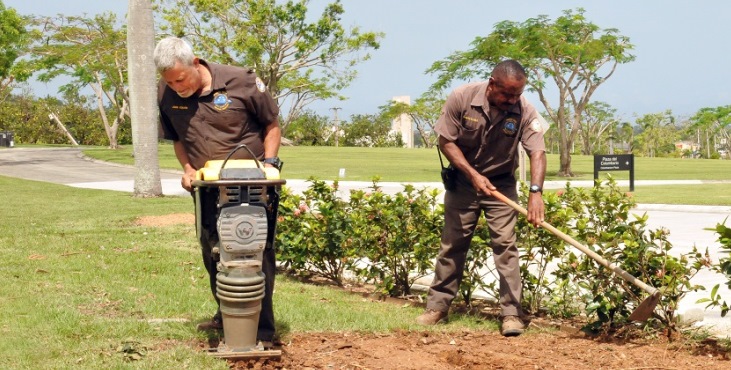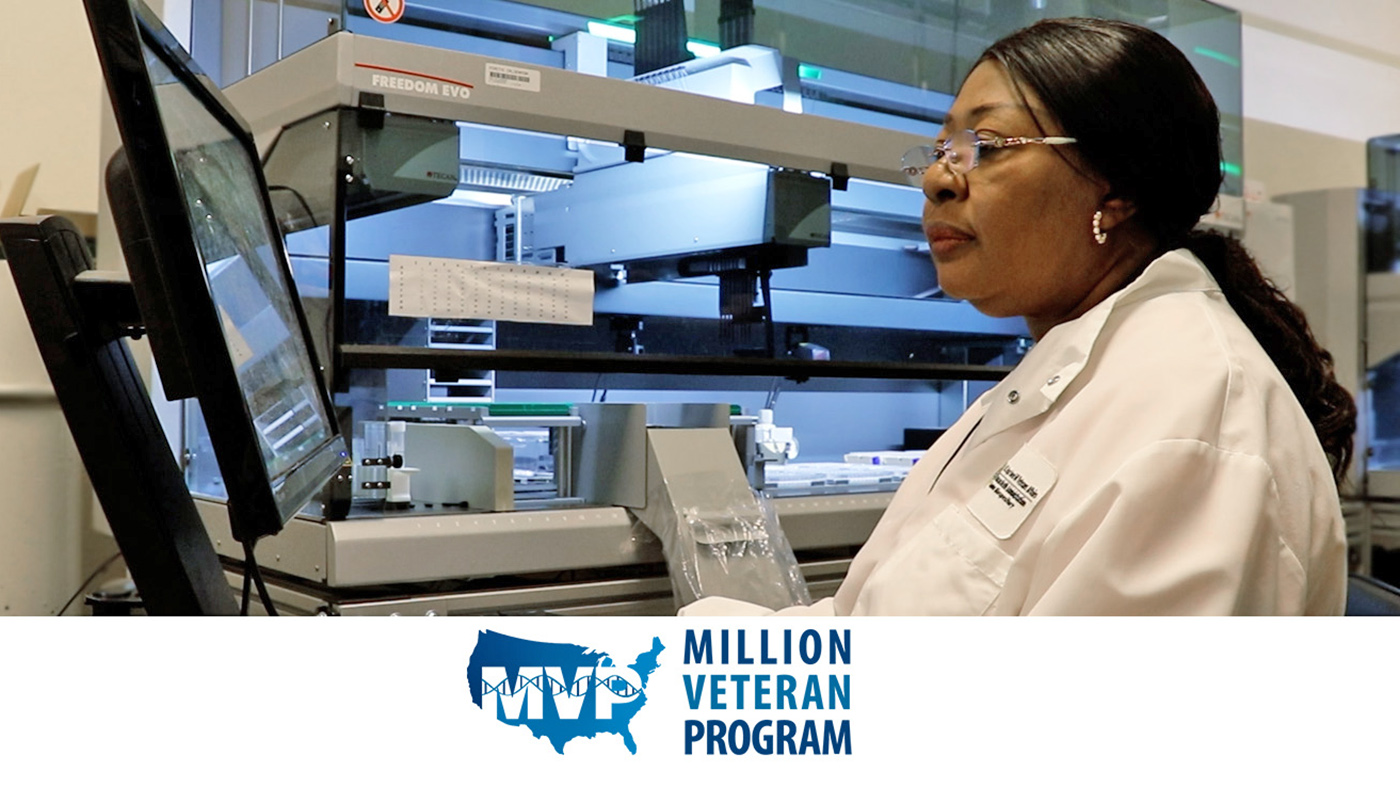Juan D. Nieves slows down the all-terrain vehicle, hops over a curb, and makes a slight turn. His left arm points toward a patch of standing and felled trees and it sweeps across the sun-drenched green hillside in front of him.
“All of this was flooded,” he said, indicating one section that is the final resting place for about 4,000 service members outside of San Juan, Puerto Rico where water rose higher than five feet in spots. “It took two days for the water to subside.”
Despite a full-force gut punch by Hurricane Maria leaving his cemetery in shambles, the director of the 69-year-old Puerto Rico National Cemetery in Bayamon is upbeat. Save one cracked stone marker (it’s been reordered), the storm damaged none of the National Cemetery Administration 60,000 Veteran gravesites when it hit Wednesday, Sept. 20.
In addition to the flooding, Maria uprooted more than 400 of the cemetery’s 900 trees, which made for a stack of trunks 20 feet high and 218 yards long. The storm’s winds twisted and tore off most of the facility’s six-feet tall steel fencing, each torn fencepost still embedded in the cement a gnarled, sharp reminder of the storm’s strength.
Further, the storm spit trash all over the 108-acre complex, killed communication and cut off water. Almost all roads to the cemetery were inaccessible (Nieves didn’t make it back until Saturday) and no one was sure when the cemetery would get back working.
“Our district director allowed us to determine our course because we were the ‘boots on the ground’ and, as facility directors, we were in the best position to determine when hazardous conditions had been properly addressed to become fully operational. We wanted to be back to work as quickly as possible. Fortunately, we have a great team who felt the way I did and we got right back to work,” Nieves said.

“Everyone was ready to get back to work,” Hubble said. “Everyone wanted to continue our mission as quickly as possible.”
Nieves has been director since 2012 but has worked at the cemetery since 1996, starting as a caretaker. The U.S. Army Reservist said the biggest challenge was the loss of phones and email. They initially couldn’t talk to their district office in Decatur, Georgia, and families couldn’t contact the office in St. Louis to schedule interments. So, Nieves and Hubble used sporadic cell service wherever they could pick up a signal and resourcefully coordinated for the cemetery to use a portable Wi-Fi device to keep operations moving.
Funeral homes and families were also going directly to the facility to schedule interments. “As long as they had the right paperwork, we were ready to serve them,” Nieves said. With one planned post-storm day for recovery (Thursday), interments began the next day (Friday).
Other crucial facets of services were also affected. Facility employees took the place of DoD-based color guards and trumpet players, who were all taxed with work rebuilding the island, handing out needed supplies and more. Hubble said employees stepped up to render honors – including presenting the American flag to loved ones and playing “Taps.” DoD troops will return Nov. 8 for an “In Memory Of” service.
Nieves said much of the heavy lifting is cleaning up the grounds done, but the detail work has only just begun. One of the people doing that work is Carlos Y. Pizarro, a Veteran and caretaker for four years. Pizarro lost his house and is still without power and water at his home, but despite his personal challenges, he wanted the cemetery back in working order serving Veterans.
“This place is an oasis,” he said. “It was important to restore it back to its previous state for our Veterans and their families. This was important to me.”
Nieves said the cemetery continues to average six to 10 interments a day (14 on the busiest of days) and is proud to have been working continuously since Sept. 22. He said much of that credit is due to the support of agencies like the Veteran Canteen Service, VA Police and others.
“It’s all about the Veterans and the services we provide,” Nieves concluded. “Trees are blooming, we’ve been able to pick up most of the debris and now we can focus on all the little details. We know that the cemetery will continue providing top-notch service for our Veterans and our dependents.”
Topics in this story
More Stories
Seven U.S. Army soldiers, one Army Reserve soldier and two Veterans are representing Team USA at the 2024 Olympic Games in Paris, which begins today.
The findings of this new MVP study underscore the importance and positive impact of diverse representation in genetic research, paving the way for significant advances in health care tailored to Veteran population-specific needs.
VA reduces complexity for Veterans, beneficiaries, and caregivers signing in to VA.gov, VA’s official mobile app, and other VA online services while continuing to secure Veteran data.







